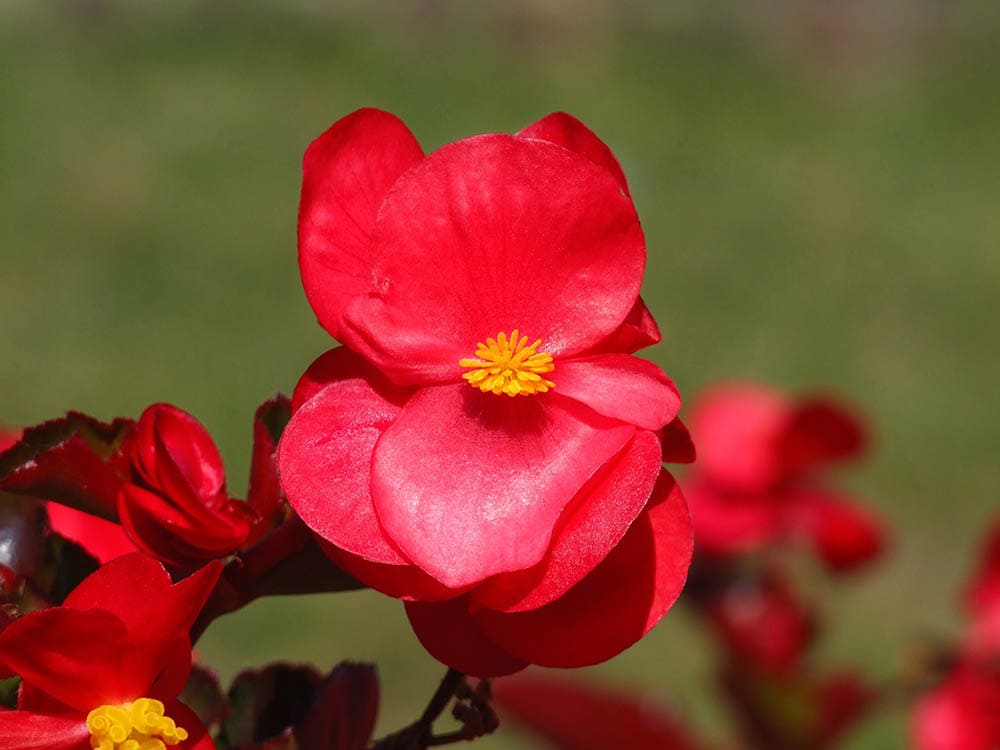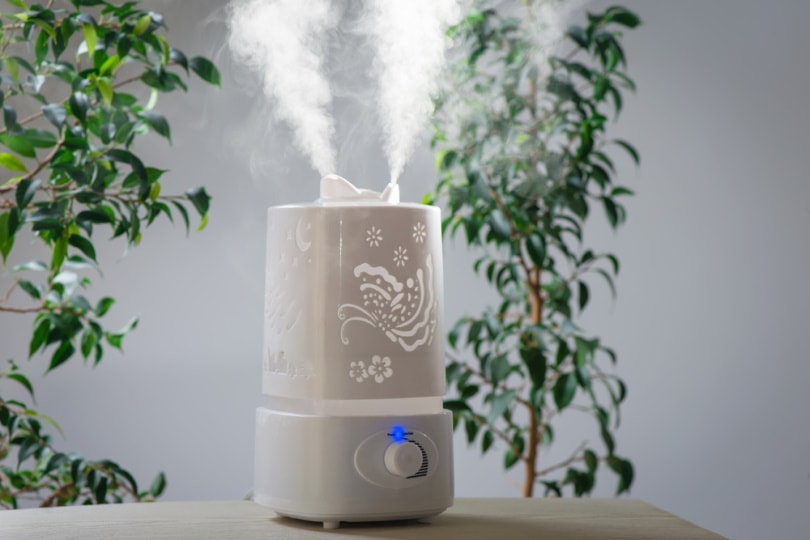How Much & How Often to Water Begonias: 3 Expert Tips
-

- Last updated:

Begonias are beautiful plants that have rich green leaves and colorful blooms. A healthy begonia plant can bloom for months at a time with dozens of compact flowers. Getting your begonia to thrive can be a tricky proposition, and some people say that begonias are high maintenance plants that are hard to take care of. Those perceptions come from the fact that begonias are tropical plants, and they can be picky about their water intake.
The key to healthy, thriving begonias is crafting a watering schedule that is just right for the plant. This is how much and how often you should water your begonia for the best results.
How Much Water Do Begonias Need?

Begonias do not need a large amount of water to thrive. They just need enough to keep their soil moist for multiple days at a time. The exact amount of water that your begonia will take will depend on the size, age, and container that your begonia is in. The best rule of thumb for watering begonias is to pour water into the pot until the water runs out of the bottom. For small pots, this can be done by holding them under the kitchen faucet. Run water from the tap and slowly turn the pot until water comes out of the bottom.
You need to make sure you have a well-draining pot with drainage holes in the bottom for the watering to work properly. If your pot does not drain, you will leave too much water in the soil without knowing how much water is already in the pot. This can lead to oversaturation and root rot.
How Often Do Begonias Need Water?

Begonias can be tricky because no two begonias are the same when it comes to how often they need to be watered. This is due to a large number of factors, but one of the most overlooked ones is the humidity level of the air. Begonias are natively found in tropical areas, and they are used to living in climates that are generally hot and humid. Begonias in areas with low humidity or dry air will need to be watered more than begonias that live in a warmer, more humid environment. This goes for indoor and outdoor begonias.
The professional consensus is that begonias should be watered every two to four days. That means you should check your begonia’s water level every two days and water as needed. The best way to check the begonia’s water is to use the knuckle test. That is when you push your index finger into the soil up to the first knuckle. If the soil is soft and moist, you don’t need to water. If the soil is dry or coarse, it is time to water. You should do this test every two days, knowing that the plant will need to be watered every second, third or fourth day.
Since begonias are sensitive to heat and humidity, there are some seasons where your begonias will need to be watered less. During hot and wet months, your begonias might only need to be watered every four days. In cool, dry months, they might need to be watered more often. Some begonias go dormant for the winter, and dormant begonias will only need water once a week or even once every two weeks. The best way to know is to do the knuckle test every couple of days to keep track of your begonia’s water levels.
The 3 Begonia Watering Tips
If you are running water through your begonia pot and checking the water every few days, but you are still getting bad results, there are a few additional tips you can try to get better outcomes for your begonia plant.
1. Use a Mister
Some begonias will benefit from the use of a mister. You can buy a misting bottle or an automatic mister to give your plant an additional dose of water via the air. The tropical locations where begonias grow naturally are much mistier than a suburban garden. Misters can help give your begonia some more ambient water and humidity that it is missing.
2. Use a Humidifier

Similarly, if you have your begonias inside, you might want to consider getting a humidifier for the area that the begonias live in. Raising the ambient humidity around your begonia can help it grow more naturally, and it can help balance out the water usage of the plant. Begonias that are misted or are near a humidifier will typically use less water than begonias without these things. You don’t need to turn your house into a rainforest but adding a little extra water to the air can be beneficial.
3. Use Distilled Water
Lastly, if you have been watering, misting, or humidifying your begonia with tap water and the plant doesn’t seem to be doing well, you might want to change to distilled water. You can buy distilled water by the gallon at most grocery stores. Some people’s tap water has high levels of minerals, alkaline, or calcium that could be adversely affecting your begonia. Distilled water removes all of these extra minerals and leaves you with simple water that might help your begonia thrive.
Conclusion
Finding an effective watering strategy for your begonia can be difficult. Each begonia is a little different, and they are sensitive to being overwatered or underwatered. They enjoy warm, humid climates better than cooler, dryer areas, and that can affect how much water they need. The best rule of thumb is to test the soil every two days and plan on watering your begonia every two to four days. Tweak as needed. After you find a good watering regime, you will get beautiful flowers many months of the year.
Featured Image Credit: Elstef, Pixabay
Contents

